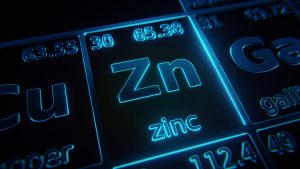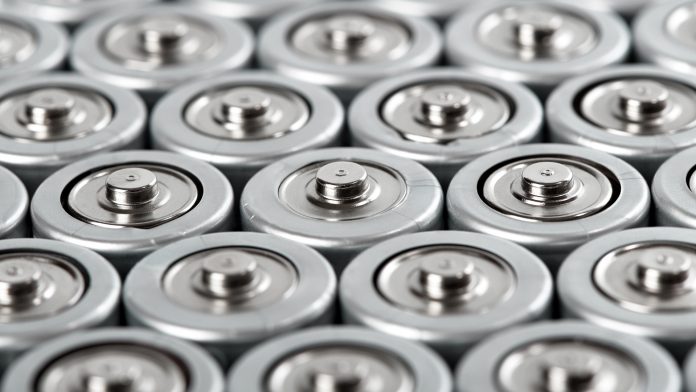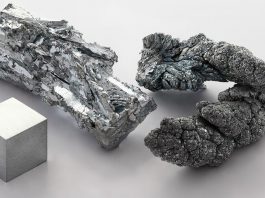A team of researchers has designed a strategy to improve zinc-air battery performance with a transition-metal composite.
A clean, safe, and efficient option for renewable energy storage is the rechargeable zinc-air battery that is powered by oxidising zinc with oxygen from the air. However, slow oxygen electrochemical reactions hinder battery performance, creating a bottleneck for scaling and commercialising this technology.
To combat this and make zinc-air batteries scalable, a team of scientists from the Beijing Institute of Technology, Tsinghua University, and Harbin Normal University have designed a strategy to improve battery performance that involves boosting oxygen reactions. This is done by combining two transition metals to deliver high electrocatalytic activity.
The study was published on 6 October in the journal Particuology.
Boosting zinc-air battery performance
Many sources of renewable energy lack long-term stability, requiring efficient energy storage systems to integrate with the electric grid. The zinc-air battery is a good option for next-generation energy storage due to its ultrahigh theoretical energy density. This battery technology draws oxygen from the air. Zinc-air batteries contain no toxic compounds and can be recycled, safely disposed of, and recharged with new zinc.
However, the issue with the performance of a zinc-air battery lies with a pair of electrochemical reactions; oxygen evolution reaction (OER) and oxygen reduction reaction (ORR). These occur at the air cathode during battery charge and discharge.
Paper author Bo-Quan Li, Associate Professor at the Beijing Institute of Technology, said: “The redox kinetics for ORR and OER are highly sluggish and render severe polarisation, decreased energy efficiency, and limited cycling lifespan of practical rechargeable zinc-air batteries.”
To ensure that the zinc-air battery can be rolled out on a large scale, these reactions require a boost. Transition and noble metals, such as nickel, cobalt, manganese, and iron, can be used to catalyse ORR and OER kinetics by accelerating the transfer of electrons between the electrode and reactants. Although this technique works, it comes with a high cost.

“Noble-metal-based electrocatalysts demonstrate state-of-the-art electrocatalytic activity and serve as widely accepted benchmarks,” said Li. “But the high cost, earth scarcity, and poor durability hinder their large-scale practical applications.”
To boost zinc-air battery performance, therefore, an ongoing search for a high-performance and noble-metal-free option that catalyses both ORR and OER is vital, said Li.
Combining transition metal atoms for the best results
Embedding transition metal atoms into a conductive carbon substrate has been previously shown to produce high electrocatalytic activity due to due to atomic efficiency, unique electronic structure, and diversity in chemical structure. The question then arises as to which metal works best for both ORR and OER.
The researchers believe that there is not just one option.
“A single type of active site can hardly promote both ORR and OER kinetics simultaneously to provide outstanding bifunctional electrocatalytic activity,” said Li. “Composing different active sites with respective electrocatalytic activity has been verified as an effective strategy to realise multi-functionality.”
The team combined two atomic transition metal sites, atomic iron and atomic nickel, and then embedded the composite over a nitrogen-doped carbon (NC) substrate. The atomic nickel boosted oxygen evolution whilst the iron successfully achieved high electrocatalytic activity on oxygen reduction. Combined, the transition metal sites realised high-active electrocatalysts in both ORR and OER.
“The composite electrocatalyst demonstrated outstanding bifunctional electrocatalytic activity that surpasses the noble-metal-based electrocatalyst and most of the reported bifunctional electrocatalysts based on analogous active sites,” said Li.
A zinc-air battery, equipped with the FeNi-NC electrocatalyst, was shown to achieve high peak power density, high working rates, and a long lifespan.
As well as boosting zinc-air battery performance, iron and nickel are cost-effective, scalable alternatives to the more expensive and rarer oxygen electrocatalysts previously used.
Utilising this strategy for further optimisation
Now, the team is developing techniques to optimise the configuration of the atomic metal sites and promote cycling stability under working conditions.
“The ultimate goal is to realise high-rate, high-capacity, and long-cycling rechargeable zinc–air batteries for practical applications,” said Li.








